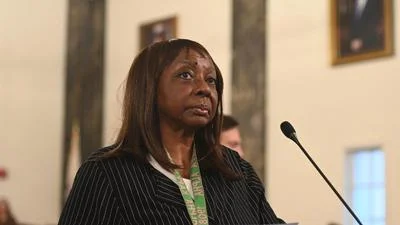A measure that would require homeowners in Chicago’s suburbs to pay off Chicago Public Schools’ $17 billion in debt is expected to go to Gov. Bruce Rauner’s desk for his signature later this month.
Backers of Senate Bill 1, led by House Speaker Michael Madigan (D-Chicago) and Senate President John Cullerton (D-Chicago), say it promises to change the way schools are funded in Illinois, distributing state money to school districts more “equitably.”
But a Chicago City Wire analysis of the the 482-page bill found carefully crafted language that would, in effect, distribute responsibility for paying off the massive debt incurred by Chicago Public Schools (CPS) across the rest of Illinois.
The bulk of that debt burden will fall on Chicago’s suburbs, most of which already get far smaller state subsidies for their schools than CPS, an analysis by Local Government Information Services (LGIS) found.
LGIS owns this publication.
If Senate Bill 1 becomes law, suburban districts will see their state funding slashed, and their money reallocated to pay off the CPS debt.
At $17,266 per pupil in 2016, according to the Illinois State Board of Education, Chicago already spends more on its schools than most suburban districts. The state average is $12,821.
CPS lobbyists’ sleight of hand
Former Cullerton staff member turned downstate State Senator Andy Manar (D-Bunker Hill) is lead sponsor of Senate Bill 1, which he is touting as “school funding reform.”
Manar, whose rural district also stands to pay part of CPS’ debt, has conspicuously avoided getting into his bill’s specifics.
For his own constituents and others, it might make his “reform” a harder sell.
Manar’s bill, which he says will distribute state school funding based on need, nonetheless includes provisions that uniquely enable Chicago to present itself as poorer than it actually is, helping itself to more state school aid than it would otherwise deserve.
Its "formula" treats America's poorest suburb, Ford Heights, with a per-capita income of $8,938, as wealthier than Chicago, whose central business district includes the most valuable real estate in all of the Midwest.
The bill also guarantees the rapidly shrinking CPS will never again get less state funding than it does in 2017.
CPS, which had 351,726 students in 2016, has lost 50,000 students over the past decade and, at its current pace, would lose another 100,000 by 2025.
This provision comes at the expense of growing school districts, mostly in the suburbs, which will get increasingly less state aid as they attract more new students.
Overpaying CPS, the bill’s backers say, will nurse the district back to solvency over the next two decades.
CPS’ debt predicament
To continue deficit spending and avoid any cuts, CPS needs all the money it can get. And fast.
A May analysis by Chicago City Wire found CPS had blown its annual budgets in 15 of the past 15 years by a total $6.6 billion, amassing debt to continually increase spending on operations while district student enrollment has steadily fallen.
Over the same period, it "borrowed" another $9 billion from teachers and other CPS employees, over-promising them retirement benefits they couldn't afford.
CPS currently owes bondholders $7.1 billion and its pension another $10.1 billion.
And it’s still borrowing.
To fund operations through the end of the school year, the district borrowed $275 million in June at a junk interest rate of more than six percent.
---
The Road to CPS' $10.1 billion in pension debt.
Chicago Public Schools leadership promised teachers retirement benefits, but didn't put money away to fund them. A bill in Springfield awaiting Governor Rauner's signature would make suburban and downstate taxpayers responsible for paying down CPS' debt.
| Year | CPS Pension Debt |
| 2003 | $2,143,885,319 |
| 2004 | $1,784,125,086 |
| 2005 | $2,422,412,769 |
| 2006 | $2,607,108,968 |
| 2007 | $1,904,575,094 |
| 2008 | $3,720,263,421 |
| 2009 | $7,257,580,085 |
| 2010 | $7,337,415,601 |
| 2011 | $6,596,539,709 |
| 2012 | $7,904,219,385 |
| 2013 | $9,334,547,550 |
| 2014 | $8,652,221,574 |
| 2015 | $9,239,622,495 |
| 2016 | $10,132,842,988 |
Sources: Illinois Department of Revenue; LGIS






 Alerts Sign-up
Alerts Sign-up